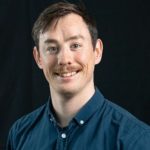Program 1
IN SILICO UPPER EXTREMITY MODELLING AND SIMULATION
The broad goal of this program is to develop a computational framework for modelling shoulder function in both healthy people and those with shoulder dysfunction. This includes developing anatomical models of shoulder anatomy across the population, and models of bony and soft tissue mechanics in activities of daily life and after injury and surgery. These models will then be adapted for designing shoulder implants, planning shoulder surgeries, and clinical decision-making.

Program 1 Co-Lead
Senior Principal Research Scientist
UNSW Neuroscience Research Australia
E: [email protected]

Program 1 Co-Lead
Prof & Chair Biomedical Engineering
Faculty of Engineering, QUT
E: [email protected]

Program 1 Co-Lead
Prof & Chair Biomedical Engineering
Faculty of Engineering, QUT
E: [email protected]

Post-Doc Fellow
Bart Bolsterlee
Hidden element
Dr Bart Bolsterlee is a mechanical and biomedical engineer with specific expertise in imaging and biomechanical modelling of the human musculoskeletal system. During his PhD he developed and evaluated tools for computational modelling of the human upper limb. As a postdoctoral researcher at NeuRA, he pioneered methods to reconstruct and quantify the three-dimensional architecture of human skeletal muscles from magnetic resonance and diffusion tensor imaging data.

POST-DOC FELLOW
Laith Alzubaidi
Hidden element
Maria is a research fellow in the School of Mechanical, Medical and Process Engineering and a research engineer in the School of Electrical Engineering and Robotics, at the Queensland University of Technology. Her research is focused on advanced tissue recognition methods, such as deep learning techniques, for the automatic interpretation of medical imaging.
Maria is currently also a QUT PhD candidate in the Medical Robotics Group at the QUT, focusing on automatic image analysis to provide surgical guidance to autonomous robots in the framework of minimally invasive surgery. Prior to her PhD candidature, she received her BEng. in Engineering Sciences from the University of Rome Tor Vergata (Italy) in 2014 and MEng. in Biomechanical Engineering from the Technical University of Delft (The Netherlands) in 2016.

Post-Doc Fellow
Dr Dermot O'Rourke
Hidden element
Dr Dermot O’Rourke has expertise in orthopaedic biomechanics with research primarily focused on the biomechanics of diseased and implanted bones.

PhD Student
Xiaolong Fan
Hidden element
“Evaluation of proximal humerus bone density on implant fixation in Shoulder Arthroplasty”

PhD Student
Max Lavaill
Hidden element
“Investigation on patient-specific features of shoulder MSK modelling. Study of an MRI-based EMG-driven model.”

PhD Student
Yilan Zhang
Hidden element
“Magnetic resonance imaging (MRI) protocols and analysis pipelines for automated reconstruction of shoulder anatomy.”

PhD Student
Hossein Ahmadi
Hidden element
“3D finite element models of the shoulder muscles to examine the effects of soft tissue tensioning and muscle activation on joint loading and stability.”

PhD Student
Jinshuai Bai
Hidden element
Jinshuai is a PhD student under the supervision of Prof. Yuantong Gu at QUT. He has finished his master by research degree at QUT, majoring in data-driven computational mechanics.
Currently, he is investigating the possibility of combination of deep learning techniques and computational mechanics for biomechanics applications. Jinshuai has been working on computational mechanics for many years. He has solid foundations for mechanics and good experiences in various computational methods.

François Bruyer-Montéléone
PhD Student
Hidden element
“Development of a musculoskeletal modelling platform for simulating pathological conditions of the shoulder joint.”
Hidden element
Hidden element
Hidden element

